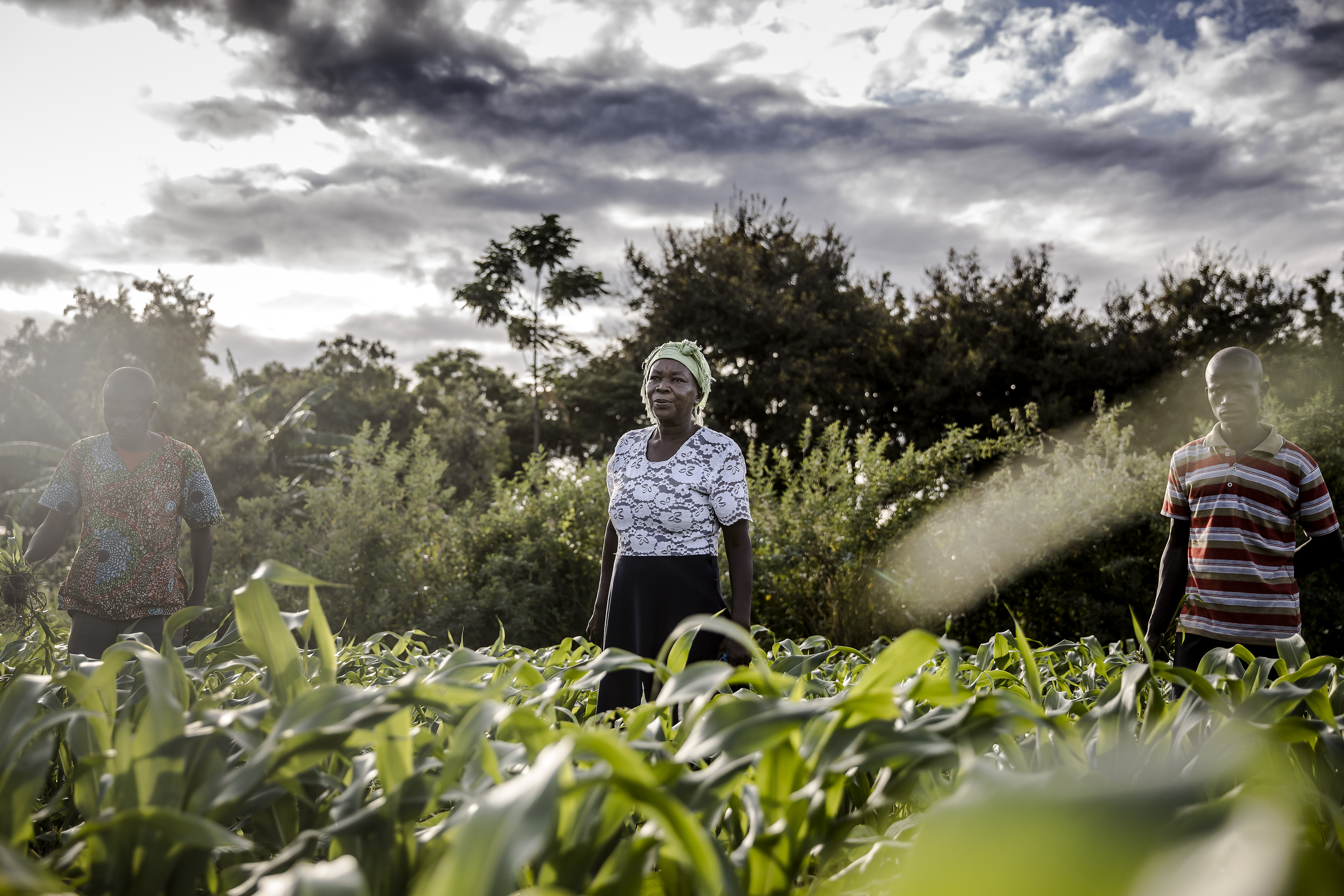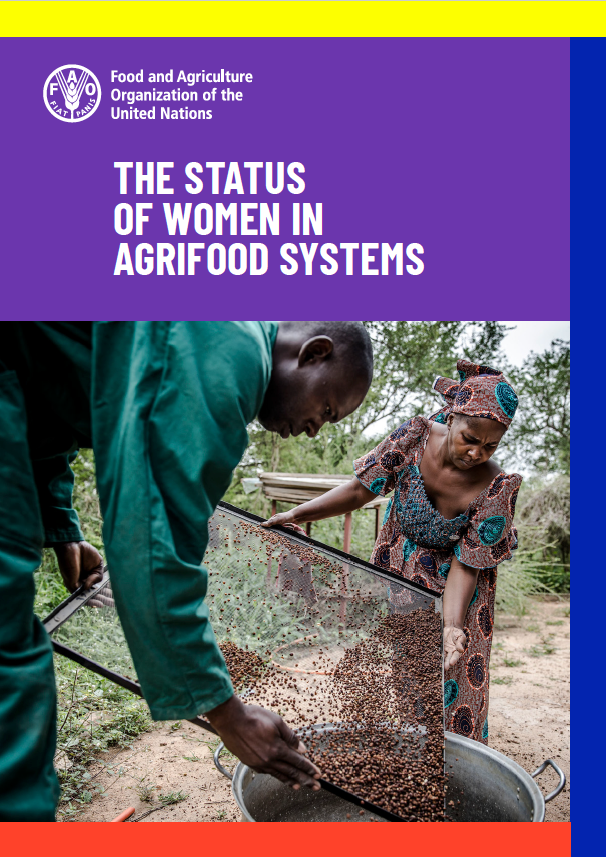Women’s equality in agrifood systems could boost the global economy by $1 trillion, reduce food insecurity by 45 million: new FAO report
Agrifood systems are a major employer of women globally and constitute a more important source of livelihood for women than for men in many countries

Women engaged in wage employment in agriculture earn 82 cents for every dollar that men earn.
©FAO/Jafaar Al Merei
Rome- Tackling gender inequalities in agrifood systems and empowering women reduces hunger, boosts the economy, and reinforces resilience to shocks like climate change and the COVID-19 pandemic, reveals a new report by the Food and Agriculture Organization of the United Nations (FAO).
The status of women in agrifood systems report, the first of its kind since 2010, goes beyond agriculture to provide a comprehensive picture of the status of women working across agrifood systems— from production to distribution and consumption.
The report highlights that globally, 36 per cent of working women are employed in agrifood systems, along with 38 per cent of working men. However, women’s roles tend to be marginalized and their working conditions are likely to be worse than men’s –irregular, informal, part-time, low-skilled, or labour-intensive. Likewise, women engaged in wage employment in agriculture earn 82 cents for every dollar that men earn.
Women also have less secure tenure over land, less access to credit and training, and have to work with technology designed for men. Along with discrimination, these inequalities create a 24 per cent gender gap in productivity between women and men farmers on farms of equal size.
Notably, the study underscores that agrifood systems are a more important source of livelihood for women than for men in many countries. For instance, in sub-Saharan Africa 66 per cent of women’s employment is in the sector, compared with 60 per cent of men. In southern Asia, women overwhelmingly work in agrifood systems (71 per cent of women, versus 47 per cent of men), although fewer women than men are in the labour force.
Socioeconomic benefits
“If we tackle the gender inequalities endemic in agrifood systems and empower women, the world will take a leap forward in addressing the goals of ending poverty and creating a world free from hunger”, says FAO Director-General QU Dongyu in the foreword of the report.
Indeed, the study explains that closing the gender gap in farm productivity and the wage gap in agricultural employment would increase global gross domestic product by nearly $1 trillion and reduce the number of food-insecure people by 45 million.
Similarly, benefits from projects that empower women are higher than those that just mainstream gender. The authors explain that if half of small-scale producers benefited from development interventions that focused on empowering women, it would significantly raise the incomes of an additional 58 million people and increase the resilience of an additional 235 million.
“Efficient, inclusive, resilient and sustainable agrifood systems depend on the empowerment of all women and gender equality. Women have always worked in agrifood systems. It is time that we made agrifood systems work for women”, adds Qu.
Inequality related to climate and global economic shocks
The report also indicates that when economies shrink, women’s jobs go first. Globally, 22 per cent of women in the ‘off-farm’ segments of agrifood systems lost their jobs in the first year of the COVID-19 pandemic compared to 2 per cent of men.
Women’s food insecurity also rose faster during the pandemic, and they had to take on more care responsibilities, which often resulted in girls missing more school than boys. Gender-based violence also increased, especially domestic violence against women and girls.
The study further confirms that women are more vulnerable to climate shocks and natural disasters, as resource constraints and discriminatory gender norms can make it harder for them to adapt. For example, women’s work burdens, including hours worked in agriculture, tend to decline less than men’s during climate shocks such as heat stress.
Slow progress
While some success has been achieved in reducing gender gaps in digital access and finance, a decade after FAO’s last report, progress in reducing most gender gaps has stagnated or reversed, hindering improvements in everything from nutrition to early child development; from income to access to quality jobs.
Moreover, Inequalities in agrifood systems hold women back at all levels and in all roles. Women lack access to training, credit and to fundamental tools – including land, fertilizers and irrigation systems – that empower them and enable them to make an equal contribution.
The authors underscore that although the extent to which national policy frameworks address gender issues improved over the past decade, gender inequality in agrifood systems persists partly because policies, institutions and discriminatory social norms are still constraining equal opportunities and equal rights to resources.
Recommendations
Overall, the report concludes that reducing gender inequalities in livelihoods, improving access to resources, and promoting resilience is a critical pathway towards gender equality, women’s empowerment and more just and sustainable agrifood systems.
This includes closing gaps related to access to assets, technology and resources. The study shows that interventions to improve women’s productivity are successful when they address care and unpaid domestic work burdens, provide education and training, and strengthen land-tenure security.
Access to childcare also has a large positive effect on mothers’ employment, while social protection programmes have shown to increase women’s employment and resilience.
The report further indicates that gender-transformative approaches show promise in changing discriminatory norms and are cost-effective with high returns.
Finally, the authors recommend addressing the continued lack of high-quality data disaggregated by sex, age, and other forms of social and economic differentiation, which is paramount to monitoring and accelerating progress towards gender equality in agrifood systems.
Other key findings
• Men have greater ownership or secure tenure rights over agricultural land than do women in 40 of 46 countries reporting on Sustainable Development Goal Indicator 5.a.1.
• The gender gap in women’s access to mobile internet in low- and middle-income countries narrowed from 25 per cent to 16 per cent between 2017 and 2021, and the gender gap in access to bank accounts narrowed from 9 percentage points to 6 percentage points
• The gap in food insecurity between men and women widened from 1.7 percentage points in 2019 to 4.3 percentage points in 2021
• While 75 per cent of policy documents relating to agriculture and rural development from 68 countries recognize women’s roles and/or women’s challenges in agriculture and rural development, only 19 per cent included policy goals related to gender
Contact
Laura Quinones FAO News and Media [email protected]
FAO News and Media (+39) 06 570 53625 [email protected]

